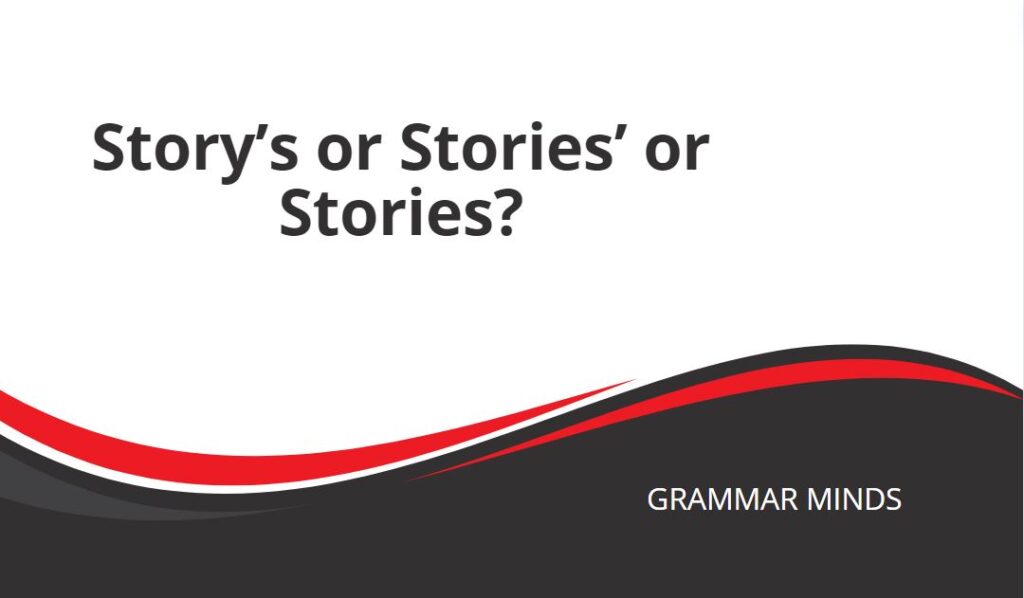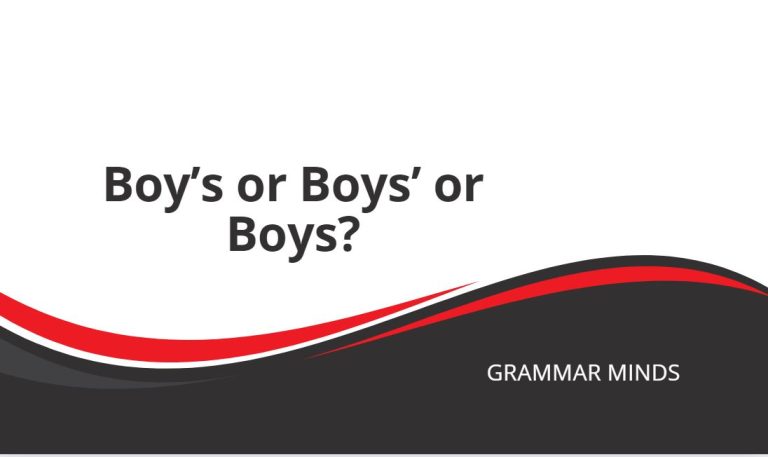Story’s is the singular possessive form of story. For example, “The story’s ending left me satisfied.” Also, stories’ is the plural possessive form. For instance, “The magazine published readers’ stories’ submissions.” Furthermore, stories is the plural form of story.

Story is an irregular noun, so you make the plural form with just the suffix “-ies.” In the following table, you can see the different forms of story:
| Form | Example |
| Singular | Story |
| Plural | Stories |
| Singular possessive | Story’s |
| Plural possessive | Stories’ |
Here you can see the three different forms in context:
Singular: I love reading a good story before bedtime.
Plural: The library has a vast collection of folk stories from around the world.
Singular possessive: The story’s ending left me with mixed emotions.
Plural possessive: The authors’ stories’ themes vary widely.
Please keep reading to learn more about using the possessive forms of story.
We have some very helpful example sentences to guide you!
Story’s
Story’s is the singular possessive form of the word story. Therefore, you use story’s to indicate that something belongs to a particular story.
The thing you refer to can be a particular aspect of the story.
Have a look at these examples to get the idea:
That story’s moral is about forgiveness and redemption.
The detective’s story’s plot twist shocked readers worldwide.
In, as much as it is grammatically correct to use the singular plural form for story. It is not commonly used. Many people often rephrase the sentences to avoid using the singular plural.
Look at the following examples
The story’s beginning was captivating.
Rephrased: The beginning of the story captivated me.
The story’s characters felt like old friends.
Rephrased: The characters in the story felt like old friends.
The story’s ending left me satisfied.
Rehrased:The ending of the story left me satisfied.
The story’s moral taught me to be kind.
Rephrased: The moral of the story taught kindness
So, story’s is the singular possessive form of story and should be used to express how things belong to a single story.
Next, we’ll explain when you should use stories’.
Stories’
The term stories’ is the plural possessive form of story. Therefore, you use it to indicate that smithing belongs to more than one story.
Furthermore, when using the possessive form of a word, you should always ensure that the word order is correct.
The noun must come after the word stories for you to use the possessive.
Notice how the noun comes after stories in all of these example sentences:
- The magazine published readers’ stories’ submissions.
- The website featured users’ stories’ experiences.
- The school displayed students’ stories’ creativity.
- The forum encouraged members’ stories’ discussions.
- The bookstore stocked writers’ stories’ bestsellers.
However, you can actually rephrase the sentence. That way, you don’t need to use the plural possessive, stories’. Instead, you can just use the plural, stories.
The examples below are how the same sentences look without the possessive because of different word order:
- The magazine published submissions from readers’ stories.
- The website featured experiences from users’ stories.
- The school displayed creativity in students’ stories.
- The forum encouraged discussions about stories among members.
- The bookstore stocked bestsellers from writers’ stories.
Now, we just need to take a look at the word stories and how to correctly use it in your sentences.
Stories
The term stories is the plural form of the word story. Therefore, you use it to talk about multiple stories.
Here are some examples of stories in a sentence:
- We exchanged stories around the campfire.
- The library shelves are lined with interesting stories.
- Children enjoy hearing stories before bedtime.
- Grandpa loves to tell stories about his adventures.
- Our family has many funny stories from vacations.
- She wrote several stories for the school magazine.
- We listened to scary stories during the sleepover.
That’s all we have for you today! Hopefully, you now feel confident using story’s, stories’, and stories in your writing.







